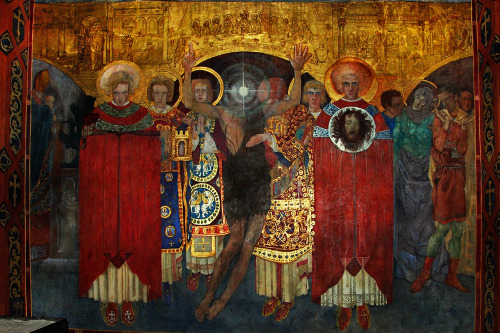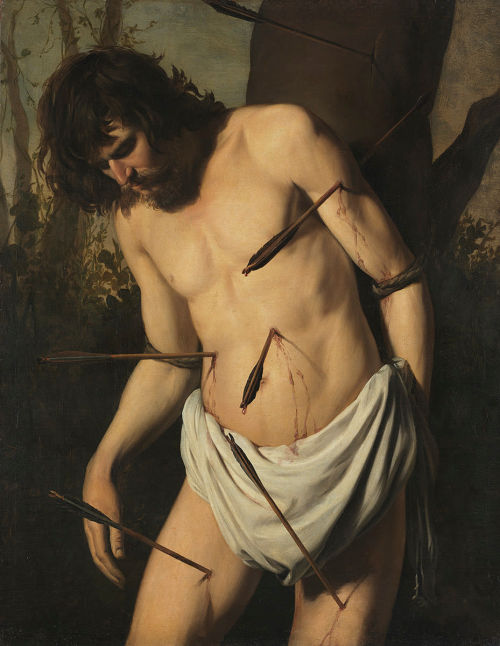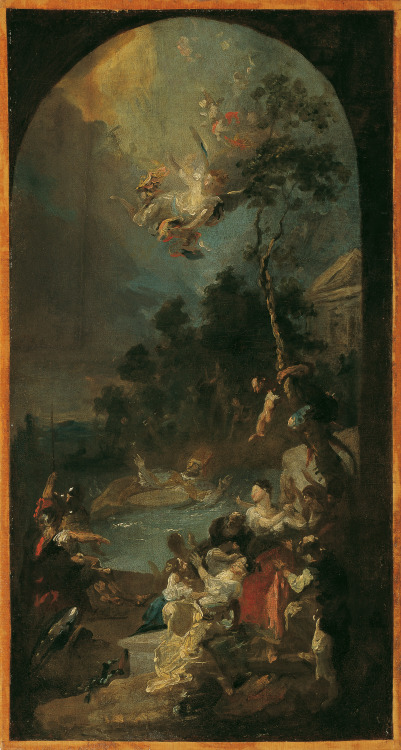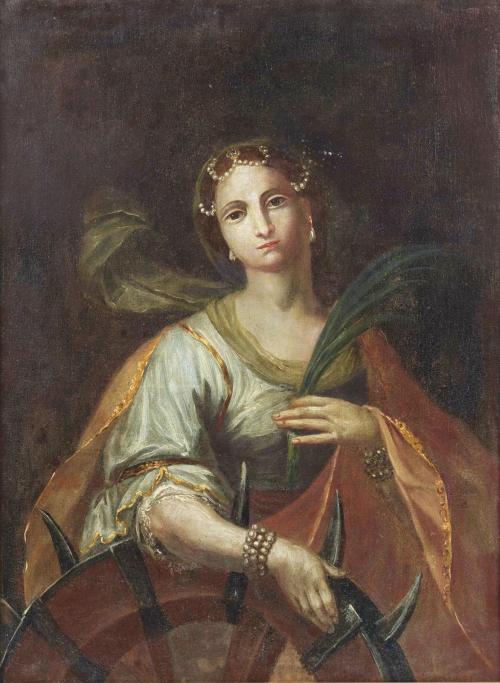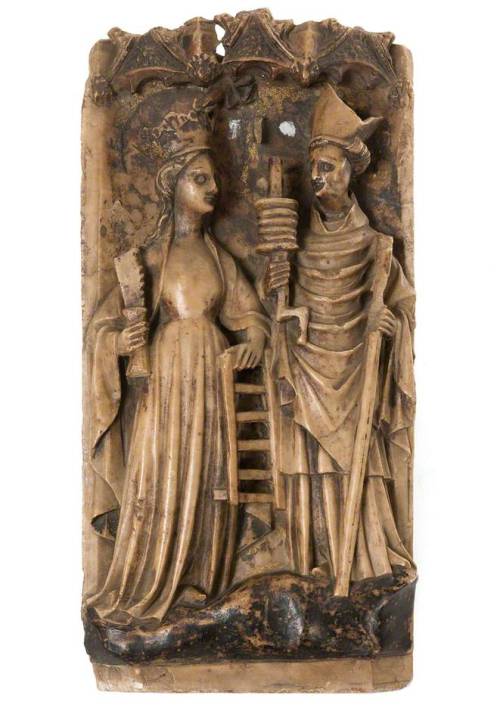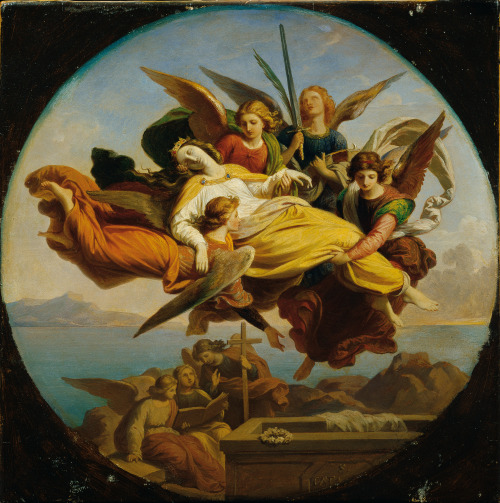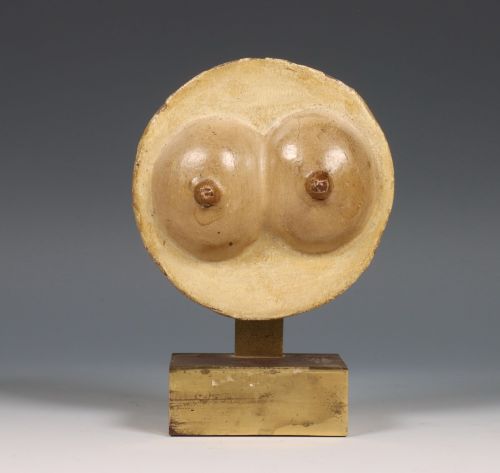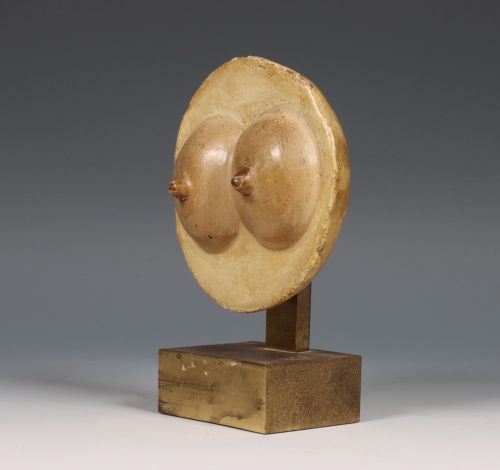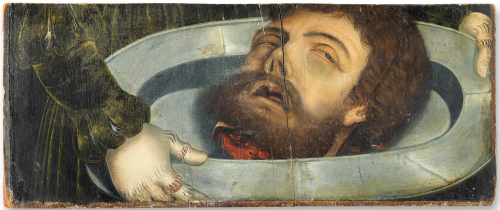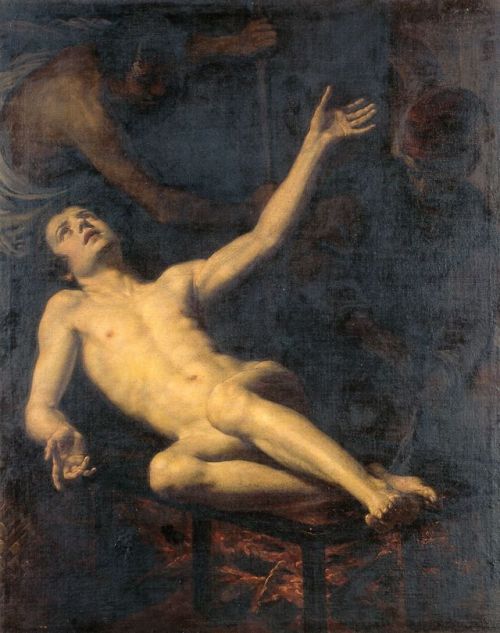#martyrdom
The kind of awful depiction of the #Martyrdom of Saint Ignatius of Antioch by Pier Leone Ghezzi (1674-1755) on the epistle side of the nave of San Clemente #Roma #Rome #church #SaintIgnatiusofAntioch #IgnatiusofAntioch #patron #lion #rococoart #italianrococopainting #eighteenthcenturyart #artincontext #art #arthistory #martyr #eatenbylions (at Basilica of San Clemente al Laterano)
Post link
Greetings from the #rector, visiting the place of our patron’s #martyrdom #Rome #Roma #Colosseo #Coliseum #SaintIgnatiusofAntioch #IgnatiusofAntioch #martyr #saints #romanarchitecture (at Colliseum, Rome, Italy)
Post link
North Italian School
Martyrdom of St. Bartholomew
Oil on wood, 45 x 40.5 cm, first half 18th century
Post link
Unknown Artist
St. Faith (Saint Foy) and St. Erasmus
Alabaster & traces of polychrome, 50.5 x 24.5 x 5 cm, late 1300s-early 1400s
Post link
Studio of Gerard Seghers
Salome receiving the head of Saint John the Baptist
Oil on canvas, 102 x 129.5 cm, 17th century
Post link
Unknown Artist
Votive offering dedicated to the martyrdom of St. Agatha of Sicily
Wood and polychrome painting, diam. 10.5 cm, 18th century
Post link
Peter Gertner
The head of Saint John the Baptist
Oil on panel, a fragment, 19.2 x 44.8 cm, 16th century
Post link
Prayer of Saint Afra of Augsburg at her martyrdom
Lord God almighty, Jesus Christ, you did not come to call the just; you came to call sinners to repentance.
Your promise is clear; it admits of no doubt. You were so good as to say that as soon as a sinner turned away from his evil deeds, you would say no more about his sins. Accept, then, as a sign of my repentance, the sufferings I am now undergoing, and by this fire that is waiting to burn my body for a time, deliver me from the eternal fire that burns body and soul alike.
Thanks be to you, Lord Jesus Christ: in your mercy you have chosen me to be a victim for the glory of your name – you who offered yourself on the cross as a victim for the salvation of the whole world, you the innocent for us the guilty, you the good for us the wicked, you the blessed for us the cursed, you the sinless for all us sinners.
To you I offer my sacrifice, to you who are one God with the Father and the Holy Spirit, with whim you live and reign, as you always will, age after age. Amen.
Post link
HOMILY for the Wedding of Roxanne Castellas & Padraig O’Duffin
St Aloysius, Glasgow - 28 December 2021
Genesis 1:27-31; Ps 127; Eph 5:22-33; Matthew 19:3-6

The 28th of December is a very special day. And some might say, an especially fitting day for the wedding of these two beautiful young people. For the 28th of December is the feast of the Holy Innocents. So, behold! Insofar as one cannot judge the state of the soul of another, so perhaps one might argue over whether the adjective is, as yet, appropriate. And Olly or Aoife might have a few stories to tell that could change my mind about whether these two could be called ‘innocents’. However, there are many indications that today is truly a feast of the holy innocents, and not simply because I expect we shall be feasting (and dancing) later today.
To begin with, speaking as parish priest of a large parish in north west London, let me observe that this is probably one of the most religious and devout weddings I’be done in some time! From the moment Paddy and Roxanne spoke to me about their Nuptial Mass, they made it clear that their focus was on the Liturgy, on the solemn worship of God, and their concern was that Christ, our Lord and Saviour, should be at the centre of the proceedings. This speaks to me of holiness, or at least the salutary aspiration to become holy. And so the readings for today’s Mass come “straight out of the book”, so to speak, and give us a solid basis to reflect upon the beauty of Christian marriage. Firstly, the Old Testament reading reminds of how things were “in the beginning”, when man and woman were created equal, having the common dignity of every human being from the moment of conception to death that comes from our being made in God’s image and likeness.
Marriage especially honours and cherishes this equality and this dignity. Last night, as I listened to your parents speak about each of their children and of each of your different characters and of their deep love in helping you to grow and develop and flourish into the special individuals God has called you to be, I saw clearly the fine example that they have given you of this. It is within a Christian marriage, which as you know has as its proper end the raising of offspring and their education in the Faith so that they should become Saints, that the equality and dignity of the human person is fostered. And equality does not entail uniformity, for the dignity of the human person and our valuing of that dignity is found precisely in their being different from us, and thus having different opinions, ideas, and tastes and cultural backgrounds from us. Within a family, therefore, there will be disagreements and arguments and tensions, and each will have an equal right to speak and voice an opinion. I know, Paddy, that this is how the O’Duffin household thrives. But this frankness and robustness of conversation is possible principally because there is love. Likewise in the Church, if we’re to engage in genuine listening and dialogue, we must first be confident of the love of our pastors, and of one another within a parish and a religious community. It strikes me that as the O’Duffin family expands to take in daughters-in-law from three different continents, so it becomes even more a microcosm of the Church universal, which is called to model unity in diversity, and to be a true communion of love.
So, for a marriage and any family to thrive, it has to be founded on love, and there must be a certainty of this love. A Christian household, above all, must model this love because they have known first of all the love of God. And as St Paul says: “nothing can separate us from the love of God”. Therefore, each day as a couple, Roxanne and Paddy, grow in your knowledge and experience of God’s love. Taste the sweetness of his forgiveness and mercy. And then, what you have received from the Lord, give to one another and to your children. So, in the chapter before the one that you’ve chosen for today’s Mass, St Paul says: “Be kind to one another, tenderhearted, forgiving one another, as God in Christ forgave you.” For before we can talk about the high Christian theology of marriage, we must first hear of the simple but demanding natural human virtues of kindness, tenderness, and forgiveness. Grace, after all, builds on nature. However, the kindnesses that your parents have shown me, and the gracious hospitality which I have received from you, Paddy and Roxanne, in these days suggests that you are well advanced in these virtues. So, keep it up!
But what about ‘innocents’? Can Roxanne and Padraig really be considered innocent? I have spoken to some who know you best, and from my own experience, I would say that innocence would be a good way of describing you. Now, some might laugh, especially the cynical who are jaded by the world. But I think what is precisely so appealing about you both is that, despite all that has been thrown at you, you have remained unspoiled by the world. For some would use the word ‘innocent’ disparagingly to mean naive and simplistic. I don’t. For me, innocence indicates a sense of goodness, sincerity, of being without guile. As Christians, we all know that the Lord tells us that we do not belong to the world because we have been consecrated in his Word of truth. Nevertheless, we must live in this sinful world without belonging to it, remaining unstained by it, and it seems to me that you know well this dynamic. After all, as I have observed, few other stag dos, I suspect, would begin with a call to attend Mass, and then a reminder about Sunday Mass afterwards. And never have I seen a prospective groom leave his rehearsal dinner to run off to sing the traditional monastic Compline. This goodness and innocence of heart are, I believe, a testimony to your parents, and to the good work of the University chaplaincy here in Glasgow. But as you leave the embrace of family and chaplaincy so as to set up your own household, and as you begin new careers in the navy and in the legal profession, you will need to be mindful of everything you’ve learnt until now. So recall the psalm response today: “fear the Lord”, that is to say, revere him, hold him in awe; and “walk in his ways”, so that you may be truly “blessed” and “all shall be well”. Yes, even when things don’t go as planned, and even when things seem disastrous, know that all shall be well. It takes faith to know this, and many things to come will try your faith, but remember this psalm 127 that you’ve chosen today, and pray it together, and live according to it, and then experience the beauty and joy and fidelity of Christian marriage that it proclaims. For this psalm calls you to a state of innocence.
St Thomas Aquinas says that the state of innocence is the pre-lapsarian state of obedience and harmony, wherein Man in obedience to God acted in accordance with nature, that is, subordinated to God’s wise and providential ordering of things. The chief characteristic of innocence, therefore, is obedience to God and trust in his providence. In the epistle from St Paul that has been read today, therefore, there is a call to return to the beginning, to the first innocence of our first parents, and marriage it seems is foundational to this. For the post-lapsarian work of re-creating us according to the pre-lapsarian state of obedience and harmony with God’s will, is never our own work. It cannot be accomplished by our wills, or sheer force of habit, or by our human natures however well-formed in natural virtues we may be. Rather, it is a work begun, sustained, and perfected by God’s grace. And God is always faithful, which is why Christ declares true marriage to be indissoluble lest we despair of his grace. Christian marriage, therefore, is a work of sanctifying grace, which is why St Paul firmly situates it within the redeeming work of Christ accomplished in his Church: “Christ loved the Church and gave himself up for her, that he might sanctify her.” Likewise, Christ, loving you, Paddy and Roxanne, has brought you to this day, that you might give yourselves up to each other, so that, as a couple, Christ might sanctify you. Remain in the innocence of together seeking the will of God and striving to obey him, and so shall you become truly holy.
It is fitting, therefore, that we celebrate these festivities today, on the festival of the Holy Innocents. For that is what you are, at least by aspiration, and certainly by Baptism what you are called to be. The Holy Innocents shed their blood for Christ, standing in his stead. And there are many times in your Christian lives, and in your life as a couple, joined today as one flesh, when you will need to sacrifice for the sake of Christ, for the sake of your marriage and your family, and for the sake of love, ultimately. Marriage lived well, therefore, and striving for holiness, will call for a white martyrdom, the marturion, the witness, of two innocents. Perhaps that is why the bride’s dress is white, although I recall that in India non-Christian brides would frequently wear red saris, the traditional colour for love, passion, and sacrifice. Nevertheless, it seems to me that the symbolism is the same - marriage demands of you, both the bride and the groom, a daily dying to self and living for others beginning with one’s spouse. Marriage and family life, therefore, is the school of charity.
The Headmistress of this school is Our Blessed Lady who, through her holy Rosary, will teach you the exemplars and meaning of charity. So, my dear innocent friends, if you wish to become a holy family, pray the Rosary daily, pray it together, and pray it with your children. As St Paul says, “The Lord is at hand. Have no anxiety about anything, but in everything by prayer and supplication with thanksgiving let your requests be made known to God. And the peace of God, which passes all understanding, will keep your hearts and your minds in Christ Jesus.” Amen.
May Our Lady of the Rosary keep you in her care, and may St John Ogilvie, whose National Shrine this is, and the Holy Innocents and all the martyrs pray for you.
it’s so funny when couples are like despite cheating on each other and lying and absolutely despising each other we’re still going strong ❤️ like ok sorry to hear that
Domenico Fiasella, called il Sarzana (Italian, Sarzana 1589-1669 Genoa), The Martyrdom of Saint Lawrence, oil on canvas, 148 x 118.5 cm, earlier attributed to Jacopo Vignali
Post link








